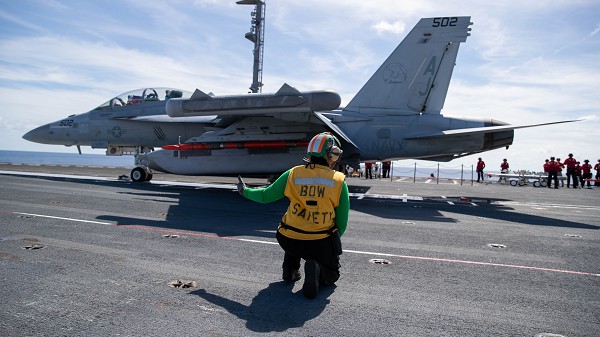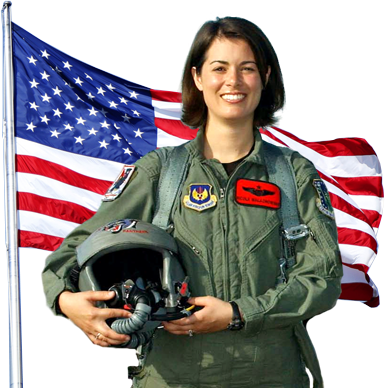- Details
- Hits: 571

U.S., December 13, 2022—A few of the thousands of care packages heading out to the troops overseas. All thanks to the good Americans back at home.
Is this a great country or what?
- Details
- Hits: 2124
 NAVAL AIR STATION NORTH ISLAND, Calif. (May 4, 2022): In this photo by MC2 Christina Ross, Vice Admiral Kenneth Whitesell, actor Tom Cruise, Secretary of the Navy Carlos Del Toro, and producer Jerry Bruckheimer meet on the red carpet for the advance premiere of Top Gun: Maverick on Naval Air Station North Island. Top Gun: Maverick features U.S. Navy and U.S. Marine Corps pilots and was shot on multiple ships and facilities including Naval Air Station Whidbey Island and the aircraft carriers USS Abraham Lincoln and USS Theodore Roosevelt.
NAVAL AIR STATION NORTH ISLAND, Calif. (May 4, 2022): In this photo by MC2 Christina Ross, Vice Admiral Kenneth Whitesell, actor Tom Cruise, Secretary of the Navy Carlos Del Toro, and producer Jerry Bruckheimer meet on the red carpet for the advance premiere of Top Gun: Maverick on Naval Air Station North Island. Top Gun: Maverick features U.S. Navy and U.S. Marine Corps pilots and was shot on multiple ships and facilities including Naval Air Station Whidbey Island and the aircraft carriers USS Abraham Lincoln and USS Theodore Roosevelt.
NAVAL AIR STATION NORTH ISLAND, Calif. (May 4, 2022): “Revvin' up your engine, listen to her howlin' roar… Metal under tension begging' you to touch and go… Highway to the Danger Zone,
Take a ride into the Danger Zone. These lyrics by singer Kenny Loggins are forever memorialized in the 1989 smash hit movie Top Gun starring Tom Cruise that proved to be a fabulous recruiting tool for the Navy.
Thirty-six years later, Top Gun: Maverick hit the screens to immense audiences around the world and will likely eclipse its impact on today’s Navy recruiting. Once again starring actor Tom Cruise, Top Gun: Maverick was filmed at the Navy’s Fighter Weapons School headquartered at Naval Air Station Fallon, Nevada.
Like the 1986 version, those are not actors flying the F-18 jets soaring over the desert landscape but active-duty aviators representing the “best of the best” of naval aviation. Unlike movie portrayals of cock fighter pilots bending the rules, today’s Top Gun pilots are the most disciplined professionals in the world.
Read more: 36 YEARS LATER, TOP GUN CONTINUES TO THRILL NAVY RECRUITERS
- Details
- Hits: 1864
 POINT MUGU, Calif. (May 11, 2022). In this photo by Ensign Drew Verbis, a P-3 Orion maritime patrol aircraft assigned to Air Test and Evaluation Squadron 30 completes its landing during the final flight of Cmdr. Jason Saglimbene, commanding officer onboard Naval Base Ventura County. Cmdr. Saglimbene, a native of Wyckoff, New Jersey, graduated from the United States Naval Academy in May 2002 and earned his Naval Aviator wings in August 2003.
POINT MUGU, Calif. (May 11, 2022). In this photo by Ensign Drew Verbis, a P-3 Orion maritime patrol aircraft assigned to Air Test and Evaluation Squadron 30 completes its landing during the final flight of Cmdr. Jason Saglimbene, commanding officer onboard Naval Base Ventura County. Cmdr. Saglimbene, a native of Wyckoff, New Jersey, graduated from the United States Naval Academy in May 2002 and earned his Naval Aviator wings in August 2003.
POINT MUGU, Calif. (May 11, 2022): They lurk beneath the waves carrying a deadly cargo, including nuclear missiles that could end civilization. Their mission is to approach by stealth, remain undetected, and then launch their missiles to devastating effect. They are enemy submarines, and they pose the ultimate threat to American civilians and military alike.
Part of America’s response to this threat is the PC-3 Orion, a four-engine turboprop aircraft used by the U.S. Navy to locate and track enemy submarines. Originally deployed in the late 1960s, the P-3C Orion has undergone a series of system upgrades to improve its ability to detect modern threats undersea and on land. Just like the famous B-52 bomber, the P-3 Orion was in service long before their pilots and crews were born.
The Orion is a large aircraft, 120 feet long with a one-hundred-foot wingspan, It has four turboprop engines that can keep it aloft for up to 14 hours and has a range of 2,380 nautical miles. It has a crew complement of eleven, including three pilots, two naval flight officers, two flight engineers, three sensor operators, and one in-flight technician. This bird is designed for large payloads, capable of carrying up to 15,000 pounds, and cruises at speeds of four hundred knots and altitudes up to 28,000 feet. But what is most impressive about the P-3 Orion is the variety of missions it performs, both as a flying listening device and as an attack platform.
- Details
- Hits: 810
 ATLANTIC OCEAN (Oct. 11, 2022): In this photo by MC3 Grant Gorzocoski, Aviation Boatswain’s Mate (Equipment) 2nd Class Lacarsha Mitchell, from Jacksonville, Fla., assigned to the first-in-class aircraft carrier USS Gerald R. Ford’s air department, signals safe to launch for an E/A-18G Growler, attached to the "Gray Wolves" of Electronic Attack Squadron142. The Gerald R. Ford Carrier Strike Group (GRFCSG) is deployed in the Atlantic Ocean, conducting training and operations alongside NATO Allies and partners.
ATLANTIC OCEAN (Oct. 11, 2022): In this photo by MC3 Grant Gorzocoski, Aviation Boatswain’s Mate (Equipment) 2nd Class Lacarsha Mitchell, from Jacksonville, Fla., assigned to the first-in-class aircraft carrier USS Gerald R. Ford’s air department, signals safe to launch for an E/A-18G Growler, attached to the "Gray Wolves" of Electronic Attack Squadron142. The Gerald R. Ford Carrier Strike Group (GRFCSG) is deployed in the Atlantic Ocean, conducting training and operations alongside NATO Allies and partners.
ATLANTIC OCEAN (Oct. 11, 2022): Most times, the enemy never sees them coming.
They are the “Gray Wolves” of Electronic Attack Squadron 142 flying the EA-18G Growler, the Navy’s first newly designed electronic warfare aircraft in more than 35 years. Call sign “Grim,” the Gray Wolves are based at Naval Air Station Whidbey Island, Oak Harbor, Washington, and they perform carrier-based missions around the world.
Flying a derivative of the combat-proven two-seat F/A-18 Hornet, the Grey Wolves’ primary mission is to electronically attack and suppress enemy air defenses before fighter aircraft arrive. Built by Boeing Aircraft, the Growler integrates the latest electronic attack technology, including the latest jamming pods, communication countermeasures, and satellite communications. Launched from aircraft carriers, this $67 million plane sports two General Electric turbofan engines that produce 22,000 pounds of thrust powering the jet up to speeds of Mach 1.8 (14,000 mph) and it has a range of up to 850 nautical miles.
Read more: NAVY GROWLERS BLIND ENEMY DEFENSES FOR FIGHTER PILOTS
- Details
- Hits: 939
 ATLANTIC OCEAN (Sept. 5, 2022): In this photo by MC3 Jack Hoppe, an E-2D Hawkeye, attached to the "Seahawks" of Airborne Command and Control Squadron, launches from the flight deck of the Nimitz-class aircraft carrier USS Harry S. Truman, during a Carrier Air Wing flyoff. While they may have an ungainly appearance, unlike the slick planes seen in the Top Gun movies, the E-2 Hawkeye is literally the “eyes in the skies” for naval aviators.
ATLANTIC OCEAN (Sept. 5, 2022): In this photo by MC3 Jack Hoppe, an E-2D Hawkeye, attached to the "Seahawks" of Airborne Command and Control Squadron, launches from the flight deck of the Nimitz-class aircraft carrier USS Harry S. Truman, during a Carrier Air Wing flyoff. While they may have an ungainly appearance, unlike the slick planes seen in the Top Gun movies, the E-2 Hawkeye is literally the “eyes in the skies” for naval aviators.
ATLANTIC OCEAN (Sept. 5, 2022): They fly strange looking birds, these Seahawks, with their turboprop engines with what looks like a giant satellite disc on top. But to Navy fighter pilots, they are the difference between life or death.
Officially dubbed the Airborne Command and Control Squadron, the Seahawks are assigned to the Harry S. Truman, a Nimitz class aircraft carrier named after America’s 33rd president famous for the slogan, “give ‘em hell”. The Truman is a floating city of over 5,200 Sailors and Marines that is twenty-four stories high and over a thousand feet long. These servicemembers spend nine months of their lives at sea, away from home and loved one.
Read more: NAVY “SEAHAWKS” ARE EYES IN THE SKIES FOR FIGHTER PILOTS
- Details
- Hits: 799
![OCONUS, December 6, 2022 - Good Afternoon, I am the BN S4 NCO for [ ]. I would like to sign my unit up to receive care packages. Many of the amenities and activities that soldier had during the earlier years to improve soldiers quality of life and Morale have seized to exist. Anything that you can provide would be appreciated. ~~ Christopher [ ]](/images/support-our-troops-org-christmas-CARE-PACKAGES-04d.jpg)
OCONUS, December 6, 2022 - Good Afternoon, I am the BN S4 NCO for [ ]. I would like to sign my unit up to receive care packages. Many of the amenities and activities that soldier had during the earlier years to improve soldiers quality of life and Morale have seized to exist. Anything that you can provide would be appreciated.
~~ Christopher [ ]
My guys are deployed to a foreign country for Christmas - anything to make it feel more like home :-) Thank you so much for your support! Anything for the holidays will help.
~~ John [ ], Army
I am the new incoming CJTF-OIR Religious Affairs Specialist, I am reaching out to see if I can get support in bringing these thousands of service members a morale boost during the holiday season. Thank you for all you do for the service members and this great country. God Bless Pro Deo Et Patria FOR GOD AND COUNTRY.
~~ John


